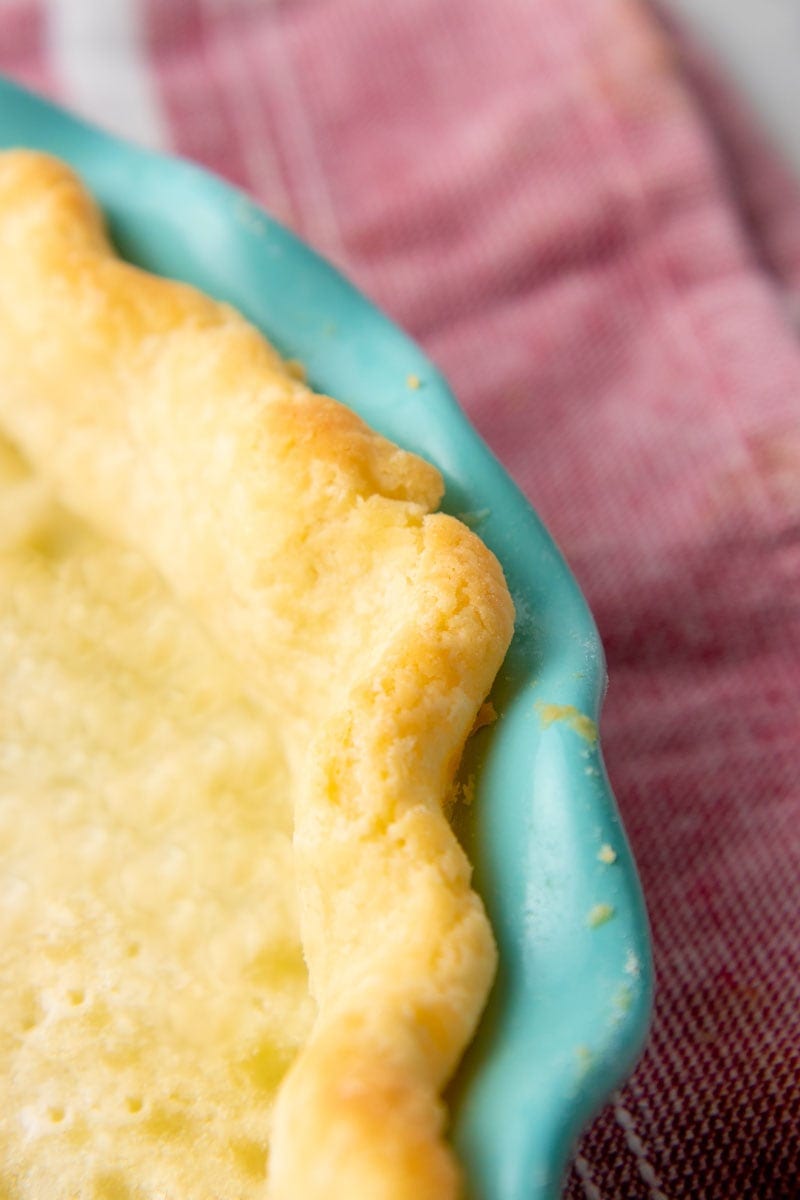Nothing says comfort quite like a homemade pie fresh from the oven. But what if you or someone you love can’t eat gluten? Have no fear! We took to the kitchen and tested dozens of batches of gluten-free pie crust to find a pie crust recipe that’s so good, people won’t even notice it is wheat-free.
This crust recipe is the result of months of work, and we’re so proud of it! It’s flaky, buttery, crisp, and 100% gluten-free. Let’s get baking!
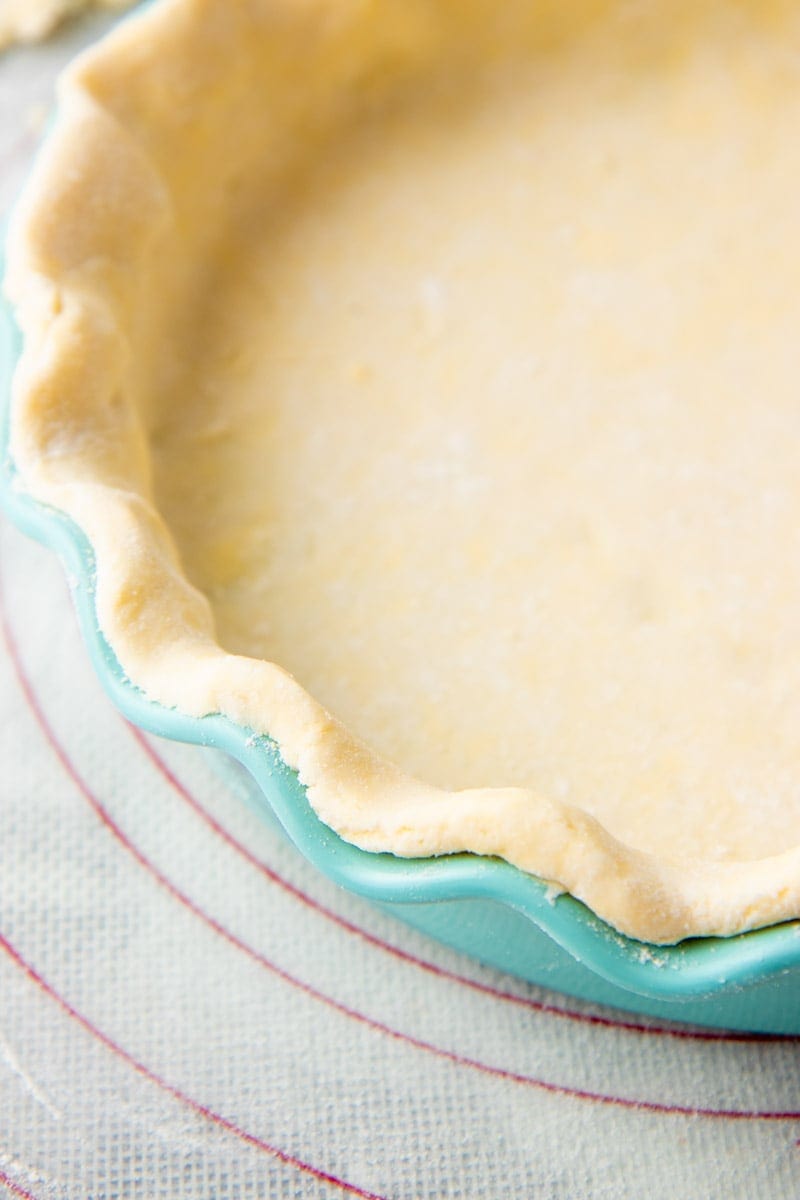
Isn’t making your own pie crust hard?
Nope! That’s a myth that’s been going on for ages. Making your own pie crust is actually super simple. It only requires a handful of ingredients and a few minutes of your time. Trust me, you’ll be able to taste the difference! Homemade pie crust is a million times more delicious than store-bought varieties. If you’re on the fence about making your own flaky gluten-free pie crust, you should take a leap of faith. You’ll be amazed at how easy—and delicious—your pies will be!
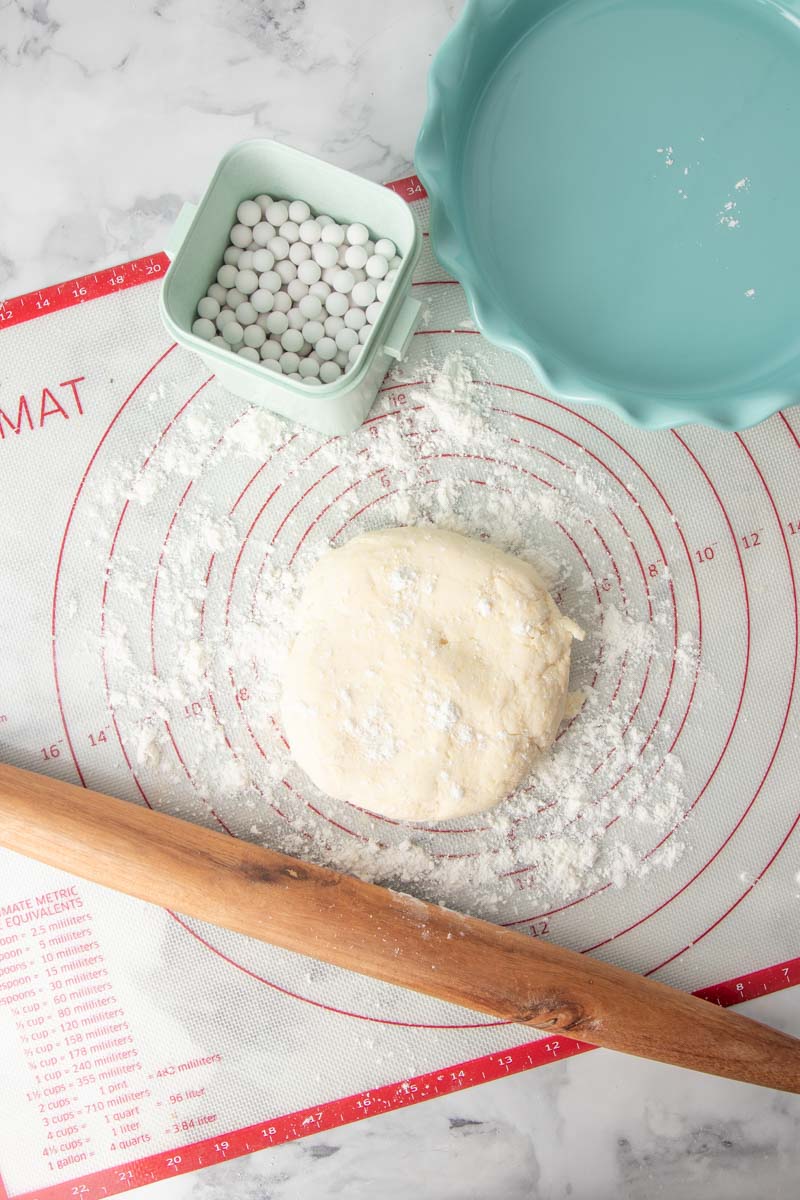
Can I make this crust ahead and freeze it?
You sure can! This recipe will last up to three days in the fridge, but if you’ve made extra pie dough and want to freeze it, all you have to do is double-wrap the balls of dough in plastic wrap and place them in a zip-top freezer bag. They’ll last for up to three months in the freezer. When you’re ready to bake them, just let the dough thaw overnight in the fridge before rolling it out.
Alternatively, you could roll out the pie crust ahead of time, place it on a tinfoil pie plate, and freeze the crust right in the dish. When you bake your pie, there’s no need to thaw it—instead, add two to three additional minutes to your cooking time.
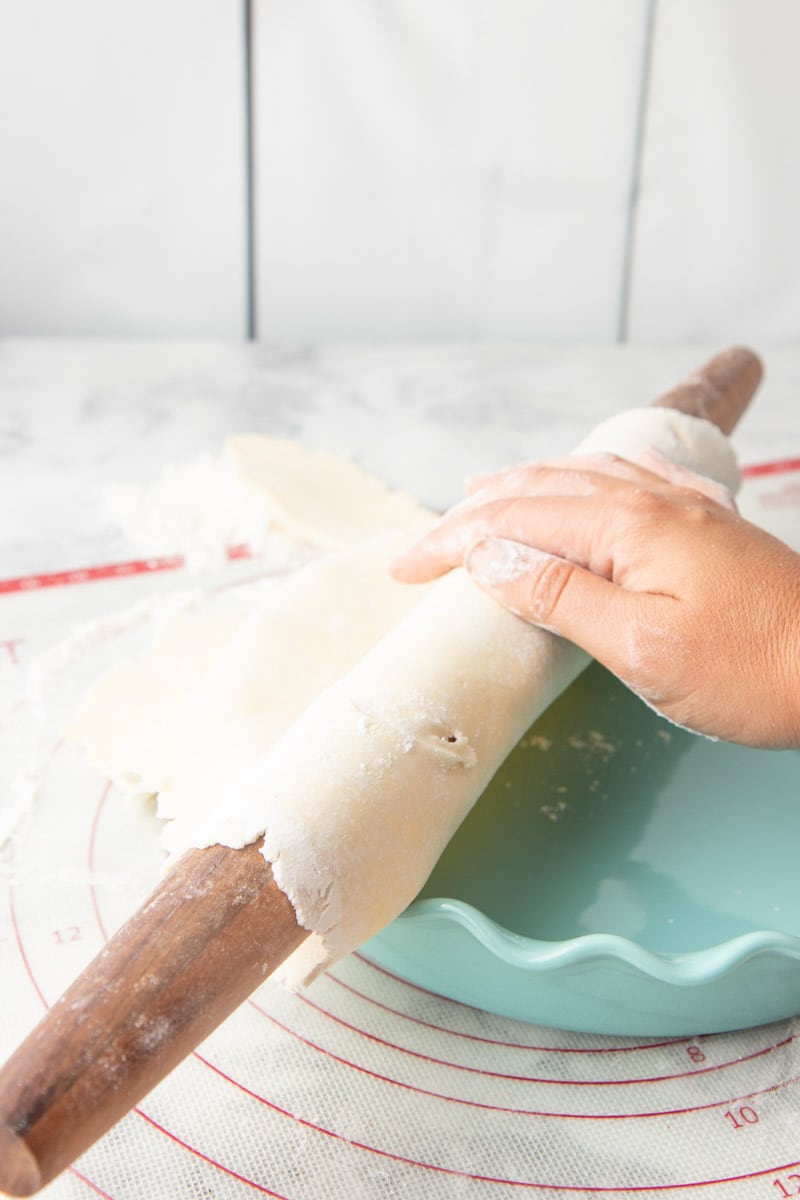
Does this pie crust have to be gluten-free?
Due to the special ingredients and proportions that make this recipe gluten-free, it’s easier to follow a separate recipe if you’re looking for one that uses wheat flour. We have a perfect pie crust recipe you’re bound to love if you don’t have any dietary restrictions. It’s been tested and loved in thousands of homes!
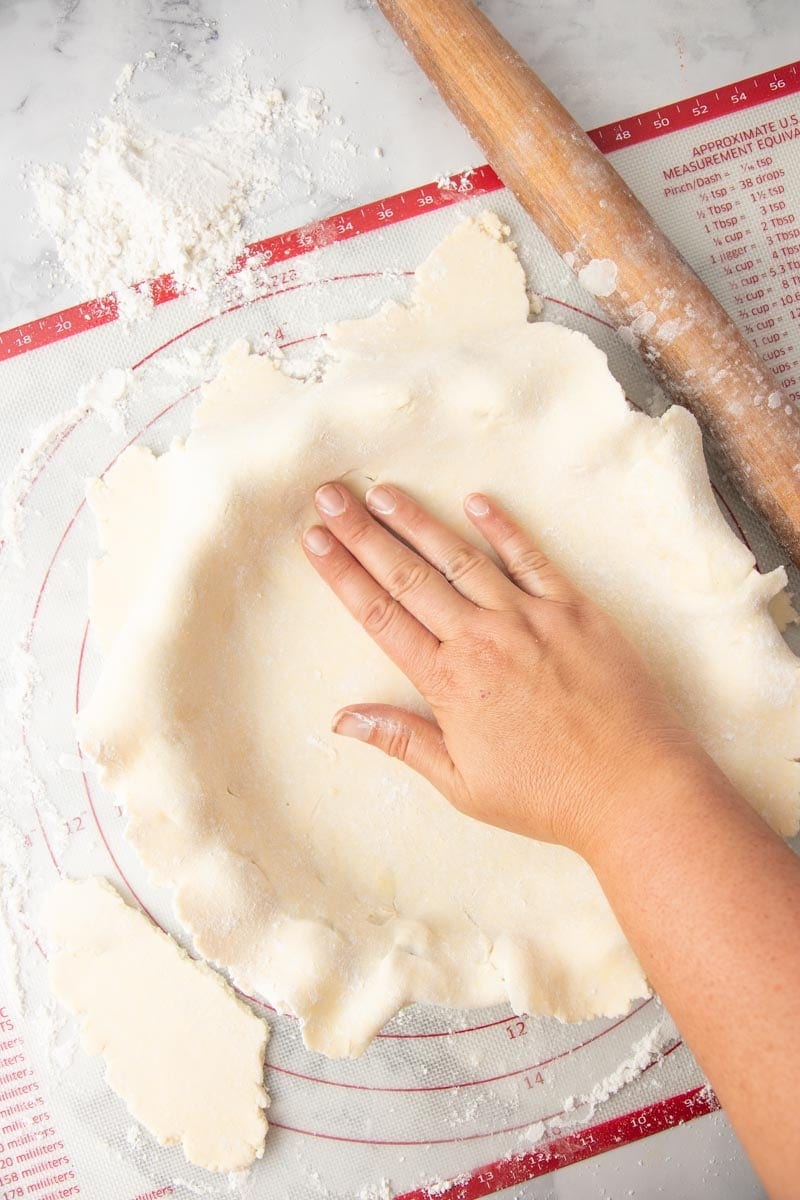
Do I have to refrigerate my pie crust?
Yes! This is a step that you can’t skip. Allowing your pie crust to cool in the fridge makes it easier to roll out and results in a better, flakier crust when baked. The cooling process hardens the butter and fats in the dough, allowing them to hold their shape easier during the rolling and baking process.
It also allows moisture to soak back into the flour particles, making it easier to work with when you grab your rolling pin. If you skip this step, you’ll be left with a crumbly crust that’s hard to work with.
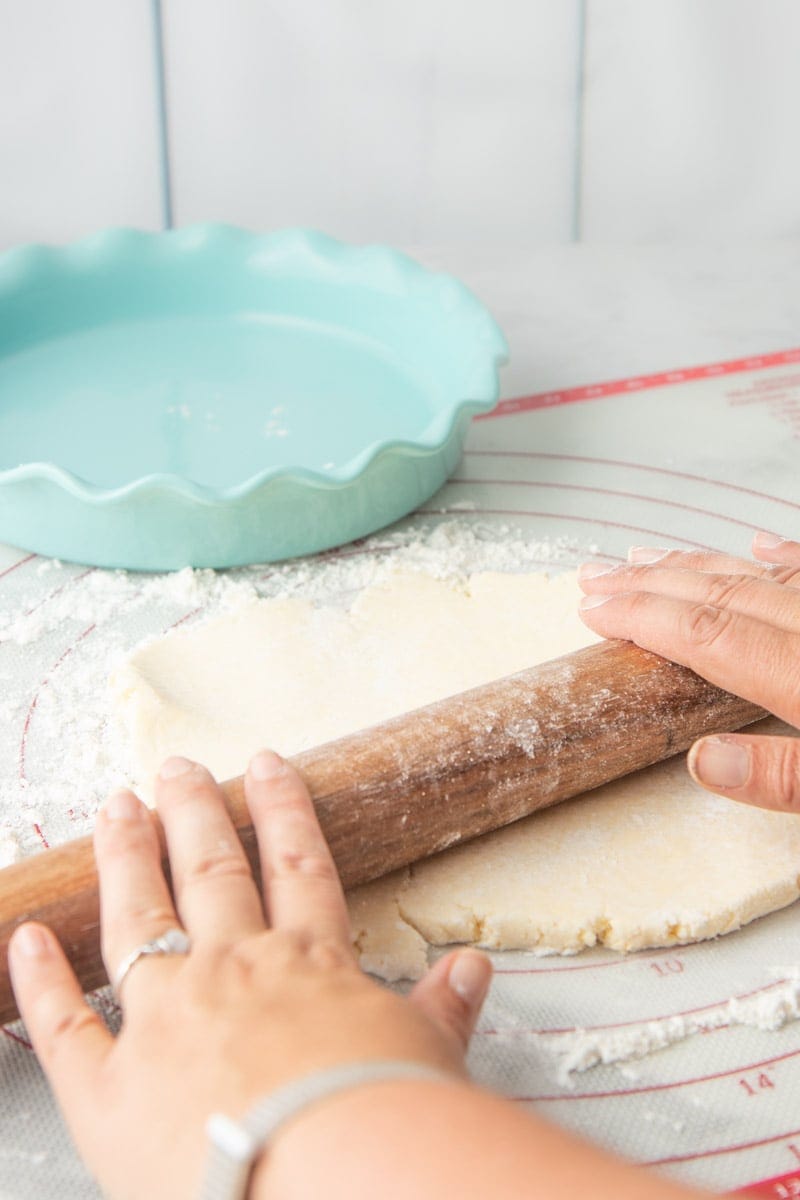
Do I have to use butter, or can I use margarine instead?
I would definitely recommend using butter instead of margarine in your pie crust. One of the reasons is that butter is hard when it’s cold, which allows it to form crumbles in your flour, so your dough is a perfect consistency. Margarine is softer and won’t produce those pea-sized crumbles you’re looking for.
The other reason is taste. Fats such as lard, shortening, and butter provide a superior rich flavor. If you’re in a pinch, you can use margarine, but you might sacrifice on the flavor and texture.
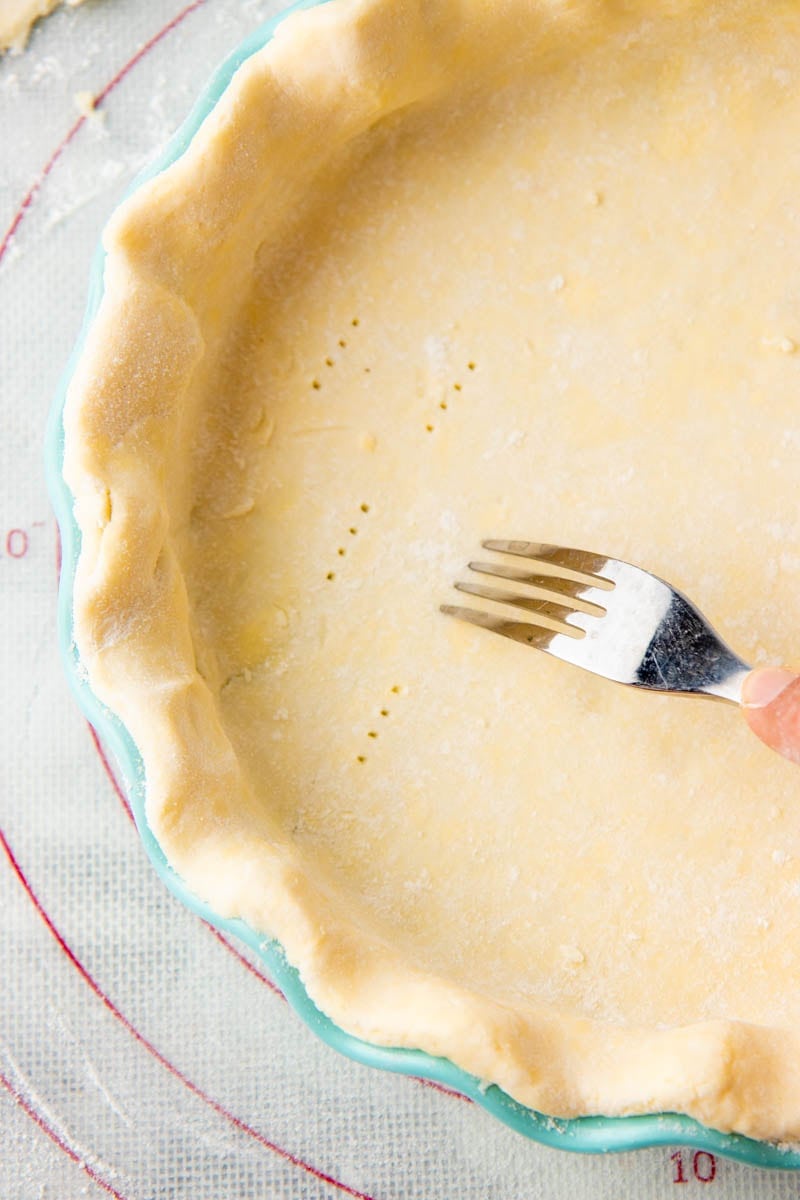
Help! My gluten-free pie crust is too crumbly. What can I do?
There are a couple of reasons that your gluten-free pie crust might be a little too crumbly. Here’s what to look for:
- You might just need a little bit more water. Try dipping your fingers in some water and working it into the dough. You don’t want to add too much water, so add just a sprinkle at a time.
- You didn’t let your crust rest in the fridge. Not only does this time chill the butter in the crust, but it also gives the flour time to absorb the moisture, making it less crumbly. No skipping the chill time!
- Your crust might be too cold. Yes, we want the crust chilled before rolling, but not too chilled! Let the crust warm slightly before trying to roll again.
- You might have used the wrong kind of gluten-free flour. Not every gluten-free flour is created equally, and some are harder to work with than others. We’ll talk about the types of flours we tested this recipe with next.
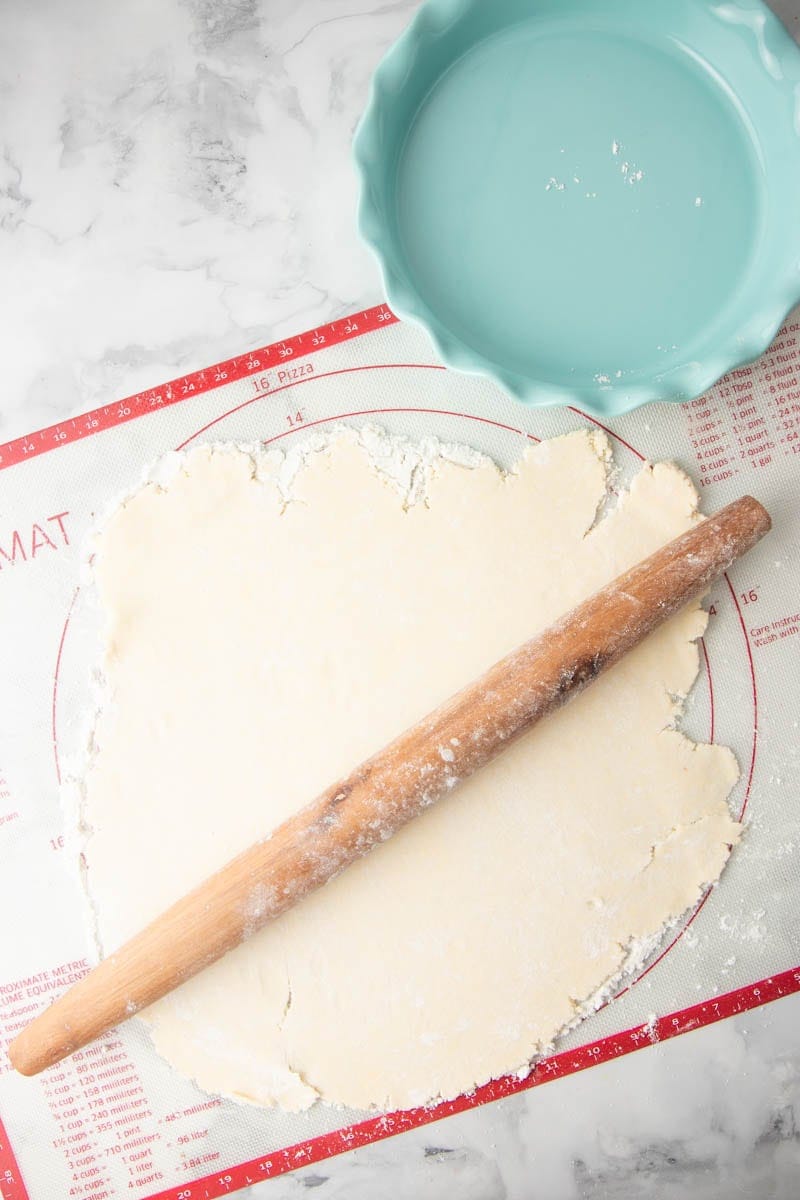
What’s the best gluten free flour to use for this recipe?
When you head to the grocery store, you’re looking for a gluten-free “cup to cup” or “all-purpose” flour blend. These flours are a mixture of gluten-free flours and starches. I wish it was as easy as that, but even those mixtures have some pretty big disparities. We tested this recipe with six different brands of gluten-free flour, and here are the results:
- Our favorite option is Cup 4 Cup Multipurpose Flour—the flavor and texture of the crust was top notch, and everything we’ve made with this blend has been easy to roll out and work with.
- Better Batter Original Blend Flour, Bob’s Red Mill 1-to-1 Baking Flour, Simple Truth All-Purpose Gluten Free Flour, and King Arthur Measure for Measure all made crusts with good flavor and texture, but the doughs were slightly harder to work with. They crumbled easily during rolling and forming the crust, and they also required more water to bring them together.
- Pillsbury Gluten Free All Purpose Flour Blend was very difficult to work with during rolling and forming the crust—so much so, we ended up just tossing the whole batch!
Wholefully Protip
Cup 4 Cup Multipurpose Flour is our favorite gluten-free flour blend for ALL gluten-free baking. We haven’t found anything it can’t do yet!
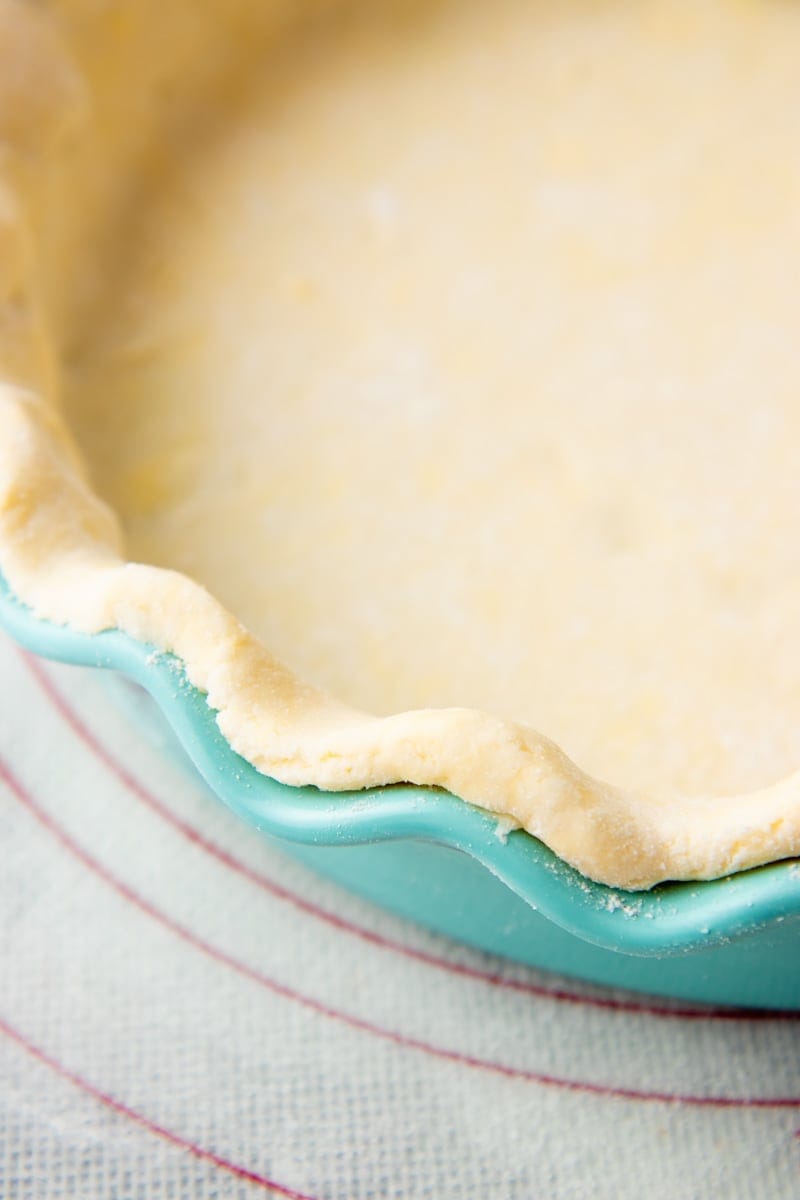
Sour cream? In a GF pie crust?
Yup! I know it seems strange, but the acidity of the sour cream helps with leavening, and the fats help add tenderness and flakiness to the gluten-free pastry. You’ll love it!
Wholefully Protip
Make sure to grab full-fat sour cream here. The sour cream adds moisture and flavor to your gluten-free pie dough. The higher the fat content, the more flavor and tenderness there will be.
Can I make this gluten free pie crust vegan or dairy-free?
We haven’t tested this recipe using plant-based alternatives (like plant-based margarine or sour cream), but we have a hunch it just might work. Let us know if you test it out!
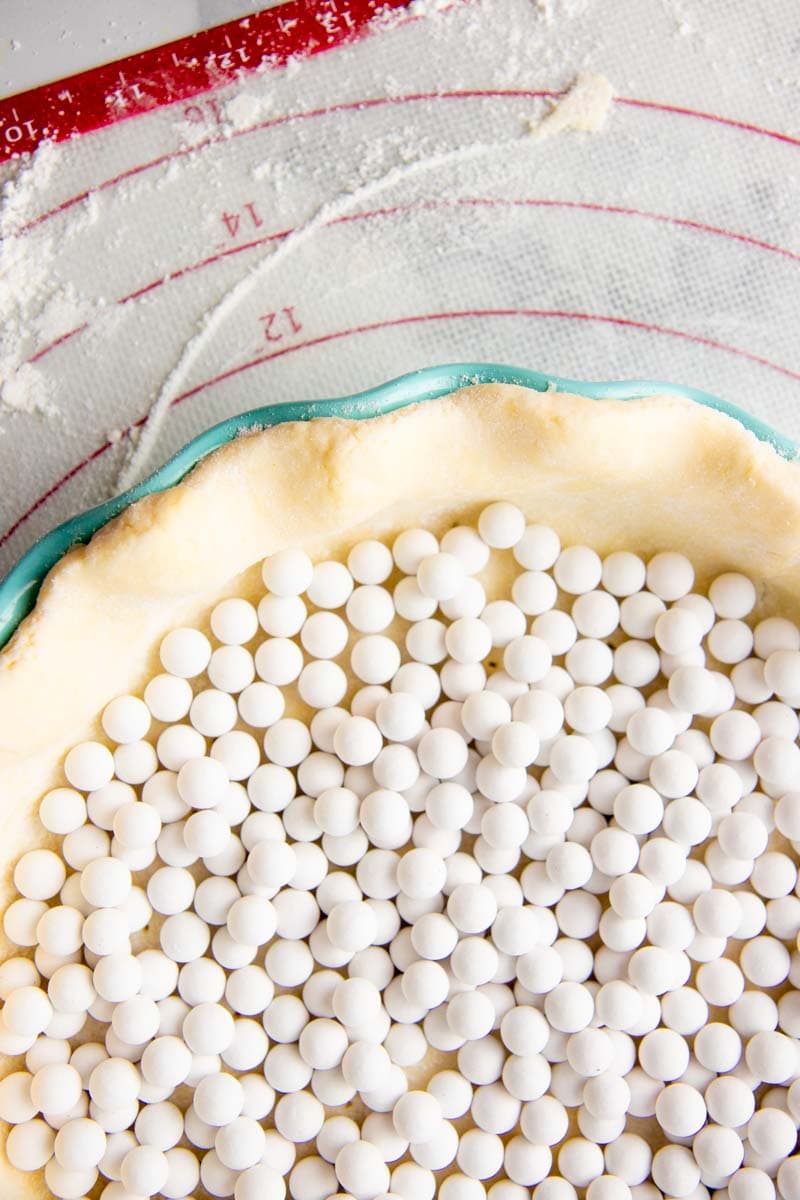
Can I pre-bake this pie crust?
Absolutely! You may have come across a pie recipe that calls for a blind-baked crust, and this means it needs one that’s been pre-cooked. To pre-cook your crust, place it in a pie dish and line the crust with parchment paper or aluminum foil. Fill the pie crust with pie weights or dried beans, and then stick it in the fridge for half an hour before baking it for 20 minutes in an oven preheated to 375°F.
After the 20 minutes are up, remove the pie from the oven and take the weights and parchment paper out. Use a fork to prick a few holes in the crust and bake for another 15 minutes.
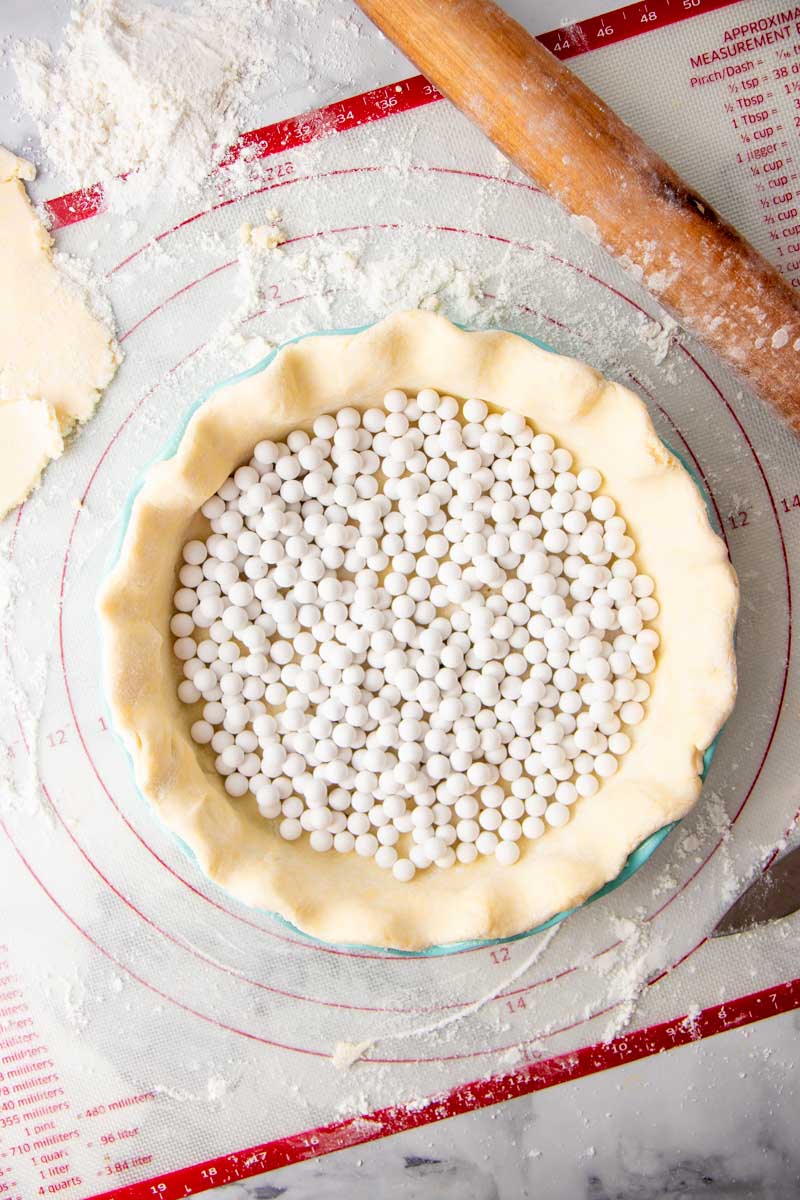
What kind of pie can this gluten-free crust be used for?
Sweet or savory, this gluten-free pie crust recipe works for them all! If you’re opting for a savory pie —think chicken pot pie or quiche—make sure you omit the sugar in the crust. If you’re looking for some awesome pie options, here are a few of our well-tested faves:
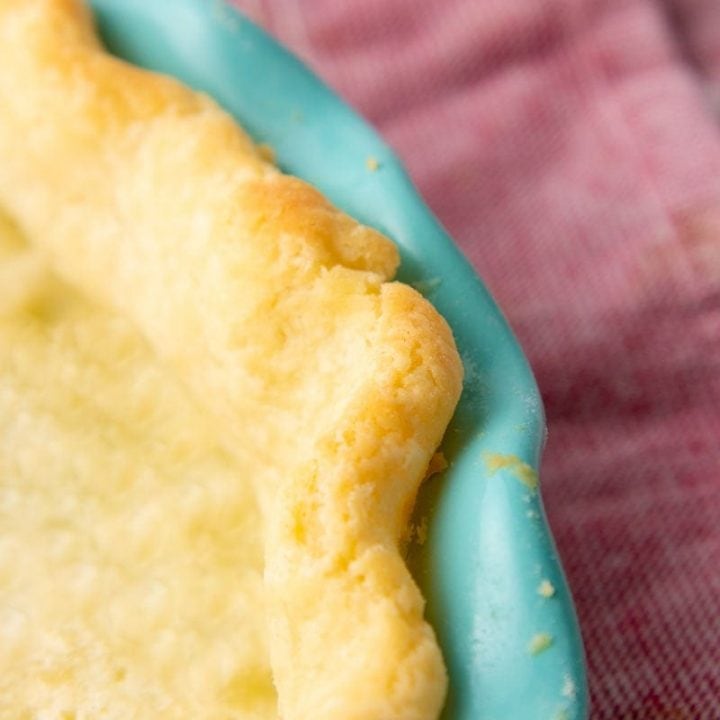
Gluten-Free Pie Crust Recipe
Our new gluten-free pie crust recipe combines readily accessible ingredients (a.k.a. not a ton of specialty flours) to create the perfect buttery, flaky crust.
Ingredients
- 1 1/2 cups (210 grams) all-purpose gluten free flour (see notes about GF flours)
- 3/4 teaspoon xanthan gum (omit if your gluten free flour already contains it)
- 2 teaspoons sugar (omit if using for a savory pie)
- 1/4 teaspoon fine sea salt
- 1 stick (1/3 cup, 113 grams) unsalted butter, cut into 1/2-inch slices
- 1 teaspoon apple cider vinegar
- 1/3 cup (100 grams) full-fat sour cream
- 0 to 5 tablespoons ice water
Instructions
Food Processor Instructions (preferred method)
- In the basin of a food processor, combine the flour, xanthan gum (if using), sugar, and salt. Pulse to combine.
- Add in the butter, apple cider vinegar, and sour cream. Pulse until the mixture comes together, and the butter is chopped into about pea-sized chunks.
- Grab a handful of the mixture and squeeze it together. If it forms well into a solid mass, you’re ready to move to the next step. If the mixture is still a little too crumbly, add in the ice water, a tablespoon at a time, pulsing after each addition, until it holds together in a ball when squeezed.
- Dump the mixture onto a flat surface, and form into a disc. Wrap the disc in plastic wrap, and stash in the fridge for at least 20 minutes before rolling out, or until ready to use, up to 3 days.
Mixing Bowl Instructions
- In a medium-size mixing bowl, combine the flour, xanthan gum (if using), sugar, and salt. Stir to combine.
- Add in the butter. Using two forks, a pastry blender, or your fingers, combine the butter and flour mixture until the butter is chopped into about pea-sized chunks.
- Add in the apple cider vinegar and sour cream. Stir until well combined.
- Grab a handful of the mixture and squeeze it together. If it forms well into a solid mass, you’re ready to move to the next step. If the mixture is still a little too crumbly, add in the ice water, a tablespoon at a time, stirring after each addition, until it holds together in a ball when squeezed.
- Dump the mixture onto a flat surface, and form into a disc. Wrap the disc in plastic wrap, and stash in the fridge for at least 20 minutes before rolling out, or until ready to use, up to 3 days.
To Roll Out and Bake
- After chilling time, remove the pie dough disc from the fridge, and allow to warm for 5 minutes.
- Unwrap dough and place on a floured surface, and then roll using a rolling pin until about 1/8" thick. Protip: two quarters stacked on top of each other is about 1/8"—which is an easy way to measure your pie crust thickness.
- Roll the pie crust onto the rolling pin, and then unroll onto a 9-inch pie pan. Gently push to fit the pie crust to the plate—there should be about a 1" overhang.
- Trim, flute, crimp or otherwise seal the edge of the crust. Fill with filling and bake according to pie recipe, or blind bake: To blind bake, line the crust with parchment paper or aluminum foil. Fill the pie crust with pie weights or dried beans, and then stick it in the fridge half an hour before baking it for 20 minutes in an oven preheated to 375°F. After the 20 minutes are up, remove the pie and take the weights and parchment paper out. Use a fork to prick a few holes in the crust and bake for another 15 minutes.
Notes
- We have tested this recipe with six different gluten-free flour blends:
- Our favorite option is Cup 4 Cup Multipurpose Flour—the flavor and texture were top notch, and it was easy to roll out and work with.
- Better Batter Original Blend Flour, Bob’s Red Mill 1-to-1 Baking Flour, Simple Truth All Purpose Gluten Free Flour, and King Arthur Measure for Measure all had good flavor and texture, but were slightly harder to work with. The crusts were all workable, but they crumbled easily during rolling and forming the crust and required more water to bring them together.
- Pillsbury Gluten Free All Purpose Flour Blend was very difficult to work with during rolling and forming the crust—we ended up just tossing the whole batch!
Nutrition Information:
Yield: 8 Serving Size: 1Amount Per Serving: Calories: 76Total Fat: 2gSaturated Fat: 1gTrans Fat: 0gUnsaturated Fat: 1gCholesterol: 4mgSodium: 78mgCarbohydrates: 13gFiber: 0gSugar: 1gProtein: 2g
At Wholefully, we believe that good nutrition is about much more than just the numbers on the nutrition facts panel. Please use the above information as only a small part of what helps you decide what foods are nourishing for you.

